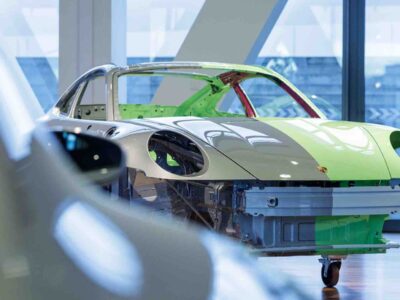When Tesla released their signature model, the Model S, it created quite a stir in the auto industry. The innocuous release from the simple California startup was the first-ever mass-produced electric sedan. A few short years later, the same car would turn the industry upside down.
Since then, the Tesla Model S has become the benchmark for luxury EVs, delivering plenty of brilliant engineering, all behind the same original design from the 2010s.
However, last year when Tesla announced the release of their 2022 edition of the Model S, they released the now infamously quick Model S Plaid alongside it, further cementing its place as the industry standard in electric vehicles.
The “Long Range” Model S – the base model for the Model S line – has been and continues to be a true engineering powerhouse. With an estimated 412 miles of battery range, it’s one of the most extended ranges of any production electric vehicle. The only production car that outstrips it is the 520-mile range of the Lucid Air Dream. Coupling this impressive range with a charging rate of 200 miles in 15 minutes, it easily puts any range anxieties to rest. The Long Range’s dual-engine all-wheel-drive drivetrain also offers plenty of power, topping out at 670 horsepower. In terms of speed, the Long Range enjoys a healthy three-second 0-60 mph time and a 155 mph top speed, which, while slower than past Model S base models, makes plenty of room for their performance Plaid model.
The Model S Plaid, however, is just a step up in almost every way. Its 2.1 second 0-60 mph time keeps pace with the Bugatti Chiron Sport, a car wildly more expensive and considerably less available than the Plaid. Its 1,020 horsepower, 1,050 lb-ft of torque engine makes 200 mph top-speed possible, an incredible feat for any electric vehicle, and despite the triple-motor design of the drivetrain, it still maintains almost 400 miles of range. Yet, all of this is packed into the same body style as the Long Range.
Now it’s no secret that much of Tesla’s expertise lies in its forward-thinking technology and less in the brand’s aesthetic sensibilities. However, the car’s body marries the two together, achieving an estimated .208 drag coefficient, making it one of the most aerodynamic bodies in production.
While the brand’s silhouette has not changed much over the past decade, its sporty profile remains one of the most recognizable designs in the electric vehicle industry.
The interior is styled in the same minimal aesthetic Tesla opts towards for all of its cars. The interior itself is very spacious, with the moonroof sprawling almost the full length of the cockpit, accentuating its roominess. The large infotainment center is operated solely through the giant touchscreen, and there is a separate space for the digital dashboard behind the wheel. But, Tesla opted to redesign the steering wheel in favor of a more yoke-like design that continues to promote the high-performance feel of the Model S line. The five-seat interior features a 26-cubic foot trunk that can be increased by folding down the rear seats, and while the front trunk space is minimal, it’s a wonderful trade-off for plenty of extra legroom in the front seating area.
The Tesla Model S is also incredibly safe. Due to the placement of the batteries underneath the car, the car has an incredibly low rollover rate, and because electric motors take up far less space than internal combustion engines, the extra space in the front was used to make head-on collisions much safer. In addition, Tesla has added an automatic emergency brake feature for last-minute stops.
However, it wouldn’t be a Tesla if it didn’t come with some hands-free driving features. The Model S is equipped with an autopilot feature that changes lanes and is able to merge on and off the highway unassisted.
At the end of the day, the Model S is pricey. At $96,440 for the “Long Range” and over $130,000 for the Plaid model, it’s securely fixed in the luxury electric vehicle segment. But, for a car that not only revolutionized the auto industry but almost single-handedly dragged it into the era of electric vehicles, it’s nothing if not a game-changer.





